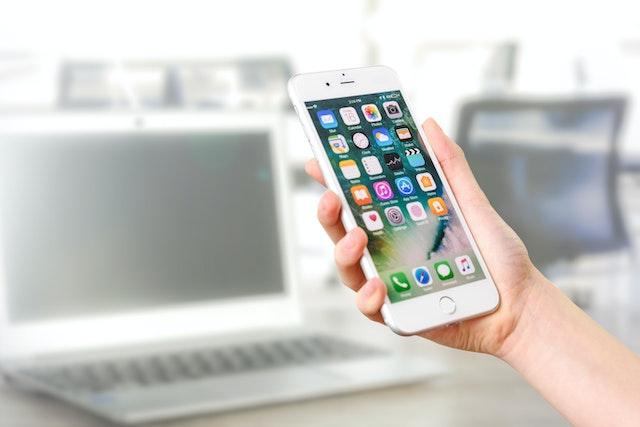The Activation Lock feature, introduced by Apple with the release of iOS 7 in 2014, was designed to protect users’ devices by making them linked to the original Apple ID account. When activated, this feature prevents unauthorized users from erasing or reactivating the device without entering the correct Apple ID and password. While it’s an excellent security measure to protect against theft, it has created issues for legitimate buyers of second-hand devices. If a device’s Activation Lock is not removed by the previous owner, the device becomes essentially useless to a new user.
Summary of the Activation Lock
| Category | Details |
|---|---|
| Issue Type | Activation Lock (iCloud lock) |
| Symptoms | Device is locked, cannot be erased or reactivated without Apple ID credentials |
| Damage | Device rendered unusable until Activation Lock is removed |
| Distribution Methods | Primarily through resale of second-hand Apple devices |
| Danger Level | Medium (harms legitimate buyers, but not a traditional malware threat) |
Remove annoying malware threats like this one in seconds!
Scan Your Computer for Free with SpyHunter
Download SpyHunter now, and scan your computer for this and other cybersecurity threats for free!
What Is Activation Lock?
Activation Lock is a security feature integrated into Apple’s ecosystem to prevent unauthorized access to a device. If an iPhone, iPad, or Apple Watch has Find My iPhone enabled, Activation Lock ensures that only the original owner can remove the device from their iCloud account.
This functionality helps reduce the resale value of stolen devices, as potential buyers cannot easily erase or repurpose a locked device. Unfortunately, the downside is that if the Activation Lock is not removed before selling or transferring ownership of a device, the new owner will be unable to access the device. This situation is common among second-hand Apple product purchases, where the previous owner has not properly removed the lock.
How Does Activation Lock Affect Device Users?
When Find My iPhone is activated on a device, it is automatically linked to the Apple ID of the device’s original owner. If you attempt to factory reset or erase the device, the Activation Lock screen will appear, asking for the original Apple ID and password. Without this information, the device is essentially locked, rendering it unusable to anyone else.
This is a serious issue for consumers who unknowingly purchase a second-hand Apple device with the lock still in place. If you have encountered this issue, don’t worry; there are steps you can take to resolve it.
How to Remove Activation Lock from a Device
There are two main ways to remove Activation Lock from a device: directly on the device or through the web.
Method 1: Remove Activation Lock on the Device
- Follow the On-Screen Instructions: If you have the Apple ID and password used to set up the device, you can easily remove the lock by entering these credentials.
- Use Device Passcode: If the device is still in use by the original owner, they can enter their device passcode to disable the lock.
For iPhone users, the process is relatively simple when the correct Apple ID and password are available. However, in many cases, second-hand device buyers may find themselves without this information.
Method 2: Remove Activation Lock on the Web
If the device is offline or in your possession but locked, you can still remove the Activation Lock through Apple’s website:
- Go to www.iCloud.com/find.
- Sign in with your Apple ID and password.
- At the top, click on All Devices.
- Select the device you want to remove from your account.
- Click Remove from Account.
This method works well if you still have access to the Apple ID used to set up the device.
What to Do if You Can’t Remove the Activation Lock
If you don’t have the necessary Apple ID credentials and you are unable to remove the Activation Lock through the above methods, here are your options:
- Contact the Original Owner: If you purchased the device second-hand, reach out to the original owner and request that they remove the lock.
- Apple Support: If you cannot contact the original owner or obtain the necessary credentials, your last option is to reach out to Apple Support. Apple will typically require proof of purchase or ownership before assisting you in removing the Activation Lock.
Preventing Activation Lock Issues
To prevent encountering issues with Activation Lock, you can take several precautions:
- Always Remove Activation Lock Before Selling Your Device: Before selling or giving away an Apple device, ensure that Find My iPhone is turned off and the Activation Lock is removed. This can be done in the iCloud settings or through the Settings menu on the device.
- Verify Used Devices Before Purchase: When purchasing a used Apple device, ensure that the seller removes the Activation Lock before completing the transaction. Ask for proof that the device is removed from their Apple ID account.
- Keep Your Apple ID Secure: Always secure your Apple ID with a strong password and enable two-factor authentication to prevent unauthorized access to your account.
- Use Trusted Sellers: When buying second-hand Apple devices, choose reputable sellers or marketplaces that offer returns and guarantees.
Conclusion
Activation Lock is a useful security feature designed to protect Apple device users, but it can be a significant problem for second-hand device buyers. If you are locked out of a device, follow the steps outlined in this guide to remove the lock. Using tools like SpyHunter can help keep your device secure and free from malware, ensuring that you don’t face further issues.
By following the preventive measures outlined in this article, you can avoid encountering problems with Activation Lock and ensure a smoother second-hand device purchase experience.
Remove annoying malware threats like this one in seconds!
Scan Your Computer for Free with SpyHunter
Download SpyHunter now, and scan your computer for this and other cybersecurity threats for free!





